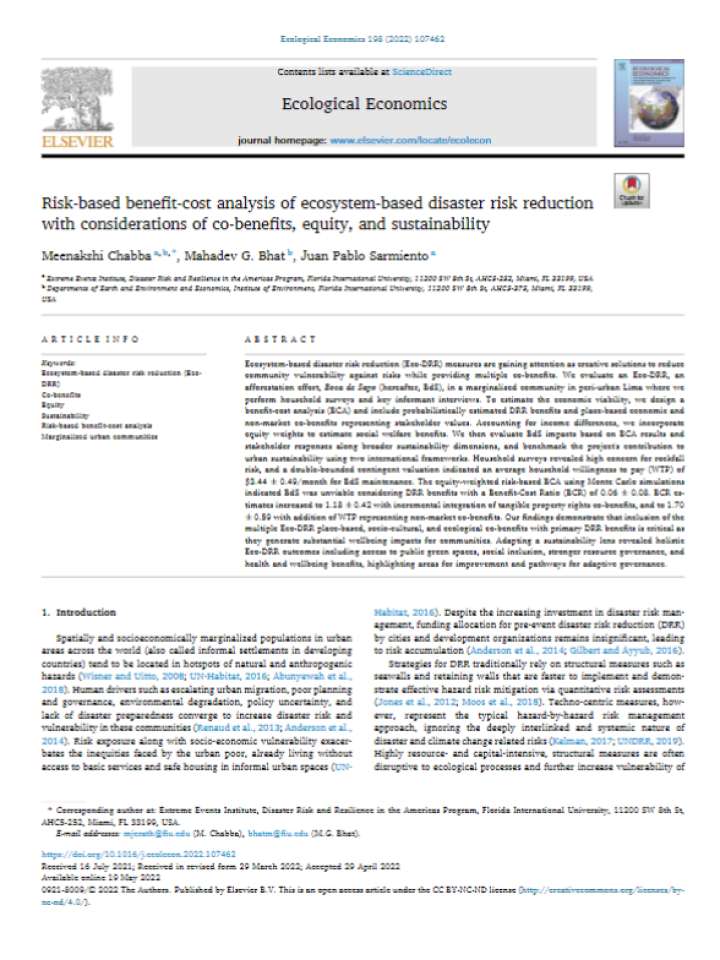Risk-based benefit-cost analysis of ecosystem-based disaster risk reduction with considerations of co-benefits, equity, and sustainability
This paper evaluates an ecosystem-based disaster risk reduction (Eco-DRR), an afforestation effort, Boca de Sapo (hereafter, BdS), in a marginalized community in peri-urban Lima where the researchers perform household surveys and key informant interviews. Ecosystem-based disaster risk reduction (Eco-DRR) measures are gaining attention as creative solutions to reduce community vulnerability against risks while providing multiple co-benefits. To estimate the economic viability, the study designs a benefit-cost analysis (BCA) and include probabilistically estimated DRR benefits and place-based economic and non-market co-benefits representing stakeholder values. Accounting for income differences, the paper incorporates equity weights to estimate social welfare benefits. The researchers then evaluate BdS impacts based on BCA results and stakeholder responses along broader sustainability dimensions, and benchmark the project's contribution to urban sustainability using two international frameworks.
The paper finds that household surveys revealed high concern for rockfall risk, and a double-bounded contingent valuation indicated an average household willingness to pay (WTP) of $3.44 ± 0.49/month for BdS maintenance. The equity-weighted risk-based BCA using Monte Carlo simulations indicated BdS was unviable considering DRR benefits with a Benefit-Cost Ratio (BCR) of 0.06 ± 0.08. BCR estimates increased to 1.18 ± 0.42 with incremental integration of tangible property rights co-benefits, and to 1.70 ± 0.59 with addition of WTP representing non-market co-benefits. The findings demonstrate that inclusion of the multiple Eco-DRR place-based, socio-cultural, and ecological co-benefits with primary DRR benefits is critical as they generate substantial wellbeing impacts for communities. Adapting a sustainability lens revealed holistic Eco-DRR outcomes including access to public green spaces, social inclusion, stronger resource governance, and health and wellbeing benefits, highlighting areas for improvement and pathways for adaptive governance.
Explore further
